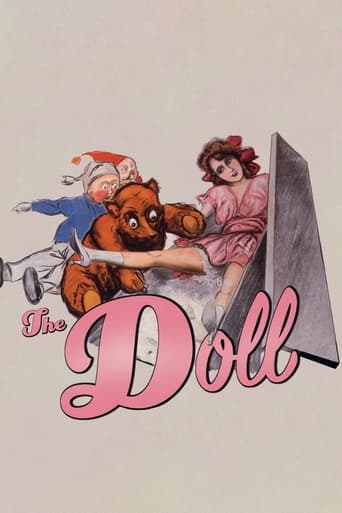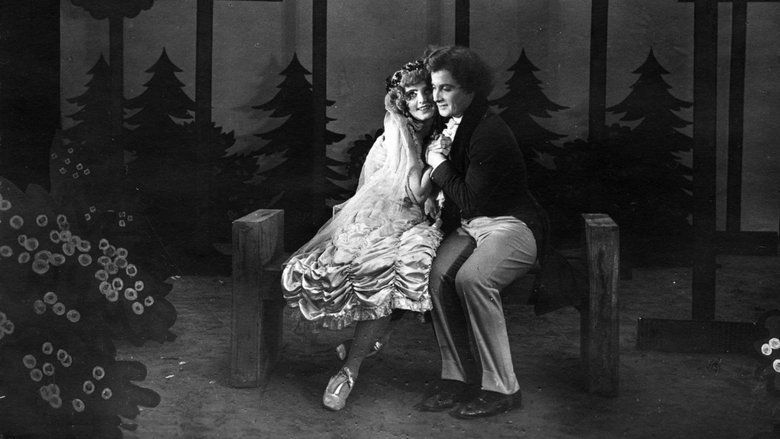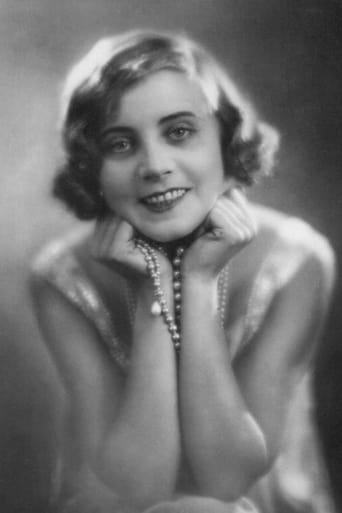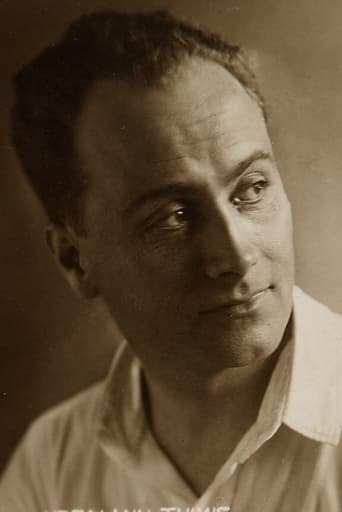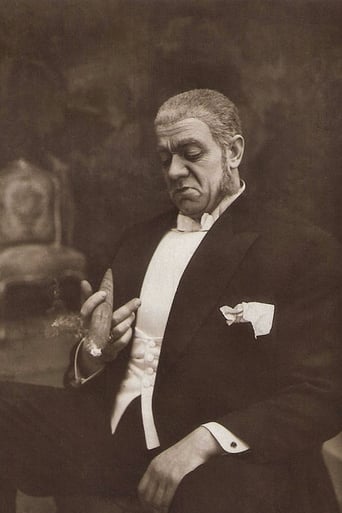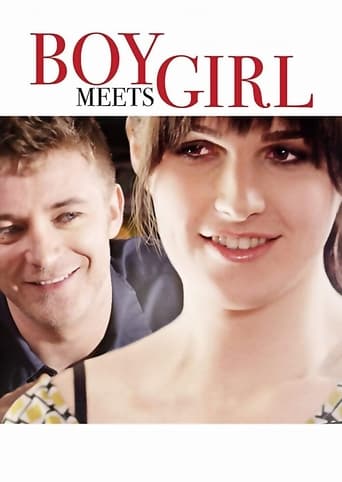The Doll (1919)
The misadventures of an effete young man who must get married in order to inherit a fortune. He opts to purchase a remarkably lifelike doll and marry it instead, not realizing that the doll is actually the puppet-maker’s flesh-and-blood daughter in disguise.
Watch Trailer
Cast


Similar titles
Reviews
The greatest movie ever made..!
There is, somehow, an interesting story here, as well as some good acting. There are also some good scenes
This movie feels like it was made purely to piss off people who want good shows
It's simply great fun, a winsome film and an occasionally over-the-top luxury fantasy that never flags.
"Die Puppe" or "The Doll" is a German black-and-white silent film from 1919, which means almost 100 years ago. It was directed by Ernst Lubitsch, who basically finished his transformation from actor into director at this point already, even if he plays a minor part in here as well. He went on to become a big thing in Hollywood afterward, scored several Academy Award nominations. "Die Puppe" runs for slightly over an hour in the version I watched. Ossi Oswalda plays the title character while Max Kronert and others play major parts as well. I personally did not find this watch here too memorable unfortunately. Actually, it was fairly difficult for the audience to understand occasionally who's the doll and who's the real girl Apart from that, this film certainly could have needed more intertitles to become more clear during several sequences, so it would be easier to understand in detail what's going on. I believe this is not one of the worst silent film from that era, but nowhere near among the best either. As a whole, I do not recommend it.
Taking a look at the Masters of Cinema Ernst Lubitsch box set,I discovered that a new score had been done for Die Puppe which was exclusively done for the collection,which led to me taking the doll out of the box.The plot:Fearing that his nephew Lancelot will be the last person to keep the family name alive, Baron Von Chanterelle tells Lancelot that he must get married to one of the villagers .Announcing to villagers that he wants his nephew to get married,Lancelot runs away from the village & Chanterelle to a monastery.After staying at the monastery for a few days with the monks,Lancelot spots a notice in the paper from Chanterelle,which says that if Lancelot gets married,he will receive a large sum of cash.Stuck between wanting to get his hands on the cash,but not wanting to get married,the monks decide to solve Lancelot's troubles,by suggesting that he gets married to a mechanical doll.View on the film:Before I get to the movie,I have to mention the excellent transfer that Masters of Cinema have done for the title,with the new score by Bernard Wrigley really capturing the warped fairy tale atmosphere of the flick.Crossing the sex Comedy & Fantasy genres over in their loose adaptation of A.E. Willner's operetta,the screenplay by co- writer/(along with E.T.A. Hoffmann & Hanns Kräly) cameoing actor/ director Ernst Lubitsch strikes a superb balance between surprisingly kinky shades with charming flights of Fantasy,as Lancelot's attempts to pass the "doll" off as his wife,leads to Lancelot finding out that a woman can't be treated like a wind-up toy,whilst the title dips into the off- beat,as Lancelot tries to find the right button combo to make the doll do his bidding.Setting the mood with the opening of a pop-up picture book, Ernst Lubitsch and cinematographers Theodor Sparkuhl & Kurt Waschneck give the movie a delightful warped children's fairy tale book appearance,with monks,dance moves and growing/receding hair popping out of the screen.Along with the surreal splashes,Lubitsch also displays an expert eye in using different tints,with the rusty tint used for scenes with Lancelot and the "doll" giving the flick a metallic shine,whilst the monastery is covered in a worn-out green.Searching desperately for a solution to getting hold of Chanterelle's cash, Hermann Thimig gives a wonderful performance as Lancelot,with Thimig keeping Lancelot away from being a slime-ball,by showing a real sense of innocent surprise at Chanterelle's sudden demands.Given the challenge of impersonating a doll, Ossi Oswalda gives an extraordinary performance as Ossi,thanks to Oswalda revealing expert comic timing in Ossi's sudden "robotic" movements,whilst making sure that the eyes of Ossi remain lit up & soulful,as Lancelot soon discovers that this "doll" is a women not to be put back in the play box.
Because the Baron of Chanterelle wants to preserve his family line, he forces his timid nephew Lancelot to choose one of the village maidens to wed. Lancelot flees to a monastery to escape the forty eager maidens. When the gluttonous monks discover that the Baron is offering a large sum for the marriage, they suggest Lancelot marry a mechanical doll instead.I absolutely love how this was put on as a mixture between a play and a film. Some of the sets (such as inside the castle) seem quite elaborate, while other things (the trees and horses) smack of a high school production. But not in a bad way -- there is a certain charm to how this story unfolded. Add to that the wild hair and outfit of the puppet master (a precursor to Willy Wonda) and you have a great looking film.Something could be said about the interaction between people and robots, and at what point are robots so lifelike that the line between human and non-human is all too fuzzy. But this is a light-hearted film and I will not get too serious here.
All cinema is artificial, and there is no getting away from this no matter how much of a realist you try to be. And while authenticity and naturalistic performances are a necessity for drama, there are some types of picture in which a deliberate flaunting of artificiality is not only acceptable, it is a positive benefit.By this point in his career, German comedy director Ernst Lubitsch had developed a unique brand of slapstick, the hallmark of which was absurdity and exaggeration. In Lubitsch's world, almost anything can happen, and often does. The stories he dreamed up with his regular collaborator Hanns Kraly were always whimsical and fairy tale-ish, but the Doll is perhaps their most fantastical of all. In it we have a lifelike mechanical doll, and a flesh-and-blood woman pretending to be the doll. Rather than go overboard trying to make this look as convincing as possible, Lubitsch takes things the other way, and stages the whole thing in a phoney and theatrical land, complete with wooden sets, painted backdrops and pantomime horses. In such a setting, the premise of the picture becomes workable.Aside from this, the comic stylings of the early Lubitsch farces were becoming increasingly refined. As usual there are lots of jokes based around ridiculous numbers of people doing the same thing in unison, or the expressions of characters in reaction. Here Lubitsch shows the confidence to have many of these gags play out in long, unbroken takes, with hilarious results, such as the long shot of Lancelot being chased round the town by a huge gang of women, followed by his elderly uncle, followed by a servant with the uncle's medication. Often the careful placement of actors means our attention is drawn to the right spot at the right time, as oppose to overdoing a gag with a jolting cut. An example of this is the uncle's servant's very funny reaction to Lancelot's suggestion that the uncle get married. Lubitsch has the servant to one side of the screen, where it seems natural for him to be, but closest to the camera so his face is clear and we instantly notice when his expression begins to change.As the eponymous doll, we have here another triumphant performance from Ossi Oswalda. While individual actors were used almost like cogs in Lubitsch's machine, there is no denying that Oswalda was surely a great comedienne in her own right. Here she shows impeccable control and timing, as she is forced to instantaneously snap in and out of being herself and acting as the doll. She also has a lot of fun pulling faces in this one. Honourable mentions go to Hermann Thimig, who is clownish enough to make a lead man in this silly setting, and Gerhard Ritterband, who despite being a youngster manages to steal every scene he is in. It's a shame these two did not have more distinguished screen careers, but of course it's worth bearing in mind that many of these players were more successful on the stage.Speaking of which, it's possible that some viewers might be put off by the theatrical artifice of this picture. There is a rather depressingly naïve school of thought among some cineastes that film is film and theatre is theatre, and for film to make itself like theatre is to somehow straitjacket itself. But as we have seen, Lubitsch's creation of a self-confessed unreal world has given him greater freedom in staging his bizarre humour. Another German director, Fritz Lang, used a similar approach in his films of the 20s and early 30s albeit for a very different effect, whereby he created macabre and stylised art deco cities in which all kinds of comic-book adventures could take place. And in the Doll, when we see characters sleepwalking over rooftops or being carried away by a bunch of helium balloons, it is reminds me more than anything of the world of cartoons, in which the only limitation is the skills and imagination of the animators. With pictures like this, Lubitsch was really setting his genius free.

